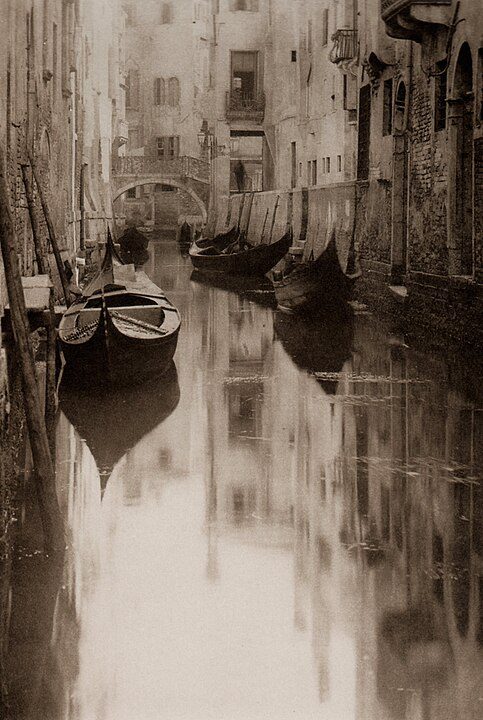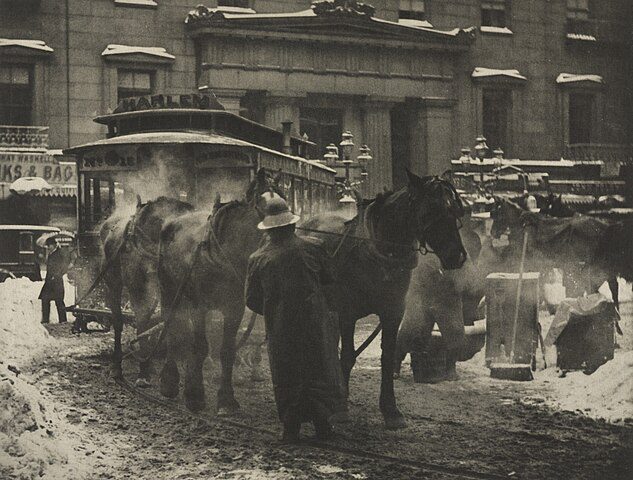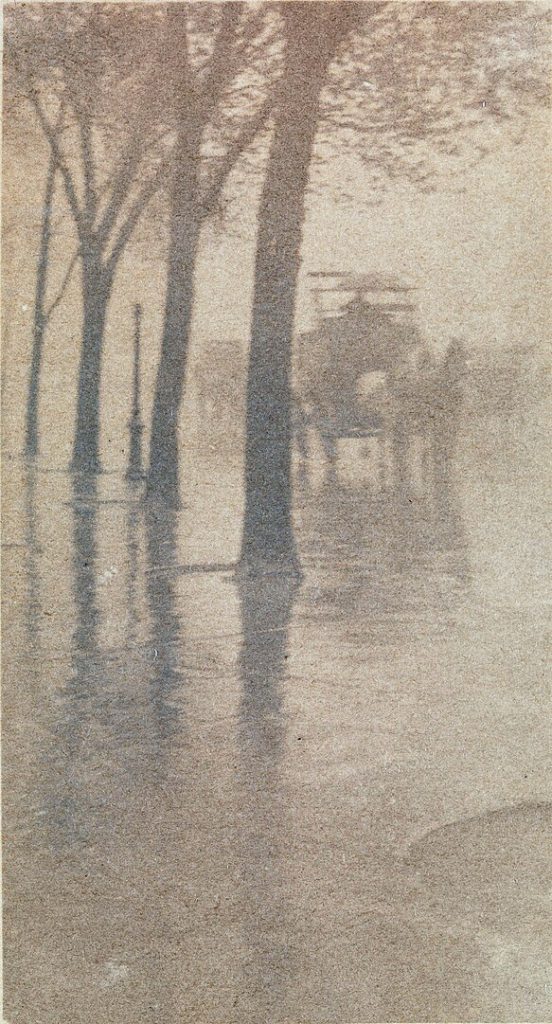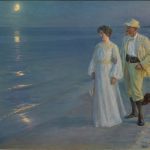
Alfred Stieglitz (1864–1946) was a seminal figure in the history of photography and modern art in America. Born in Hoboken, New Jersey, to German-Jewish immigrants, Stieglitz’s life was marked by his relentless pursuit of artistic innovation, his championing of modern art, and his profound influence on the development of photographic expression as a legitimate art form.
Stieglitz’s early years were characterized by a conventional education, but he quickly deviated from the expected path to pursue his passion for photography. After studying mechanical engineering in Germany, Stieglitz became deeply involved in the photographic scene there, where he was exposed to the pictorialist approach, which emphasized beauty, tonality, and composition in photography, akin to painting and sculpture. His return to the United States in 1890 marked the beginning of his lifelong mission to elevate photography to the status of fine art.

In New York City, Stieglitz became a central figure in the photographic community, advocating for the medium’s recognition as an art form. He founded the Photo-Secession group in 1902, establishing a platform for promoting photography as a legitimate form of artistic expression. The group’s exhibitions, notably at the Little Galleries of the Photo-Secession, later known as 291 after its Fifth Avenue address, showcased works by photographers who shared Stieglitz’s vision, including Edward Steichen, Gertrude Käsebier, and Clarence H. White.
Influence Grows
Stieglitz’s work as a publisher further solidified his influence on the art and photography worlds. Through publications like “Camera Work,” a quarterly journal he founded in 1903, Stieglitz provided a voice for the Photo-Secession movement and introduced European avant-garde artists to the American audience. The journal featured high-quality photogravures and critical writings, emphasizing the artistic potential of photography and serving as a vital conduit for the exchange of ideas among artists and photographers.
Throughout his career, Stieglitz was an indefatigable advocate for modern art, using 291 as a venue to introduce European modernists such as Auguste Rodin, Henri Matisse, and Pablo Picasso to the American public. His efforts were instrumental in shaping the tastes of American collectors and significantly contributed to the acceptance of modern art in the United States.

Stieglitz’s personal artistic output during this period was prolific and innovative. He explored themes of urban life, portraiture, and the natural environment, employing techniques that emphasized the emotional and symbolic potential of the medium. His series of cloud photographs, which he called “Equivalents,” represented a groundbreaking step in abstract photography, suggesting that photographs could convey emotional experiences directly, without the need for recognizable subjects.
The later years of Stieglitz’s life were marked by his relationship with the painter Georgia O’Keeffe, whom he married in 1924. O’Keeffe became a central figure in Stieglitz’s work, with numerous portraits and studies that explore the interplay between the artist’s vision and his subject’s unique persona. Their partnership was both a personal and professional collaboration, influencing each other’s work and shaping the course of American modernism.
Challenges
Despite his achievements, Stieglitz faced challenges in his quest to promote modern art and photography. The financial strains of running galleries, coupled with the shifting dynamics of the art world, often placed him at odds with the very movements he helped to foster. Nevertheless, his legacy is undeniable. Through his galleries, publications, and personal artistic endeavors, Stieglitz played a pivotal role in establishing photography as a recognized art form and laid the groundwork for the acceptance of modern art in America.
Stieglitz’s impact extends beyond his contributions to photography and modern art. His efforts to create a dialogue between American and European artists, his championing of emerging talents, and his visionary approach to curating and exhibiting art have left an indelible mark on the cultural landscape. His work has inspired generations of artists, photographers, and collectors, and his vision of art as a profound, communicative force continues to resonate today.

In recognition of his contributions, Stieglitz was the subject of numerous exhibitions and retrospectives, both during his lifetime and posthumously. His photographs and collections have been acquired by major museums around the world, ensuring that his legacy endures. Through his tireless advocacy and creative output, Alfred Stieglitz helped to redefine the boundaries of art and photography, making him one of the most influential figures in the history of visual culture in the 20th century.




